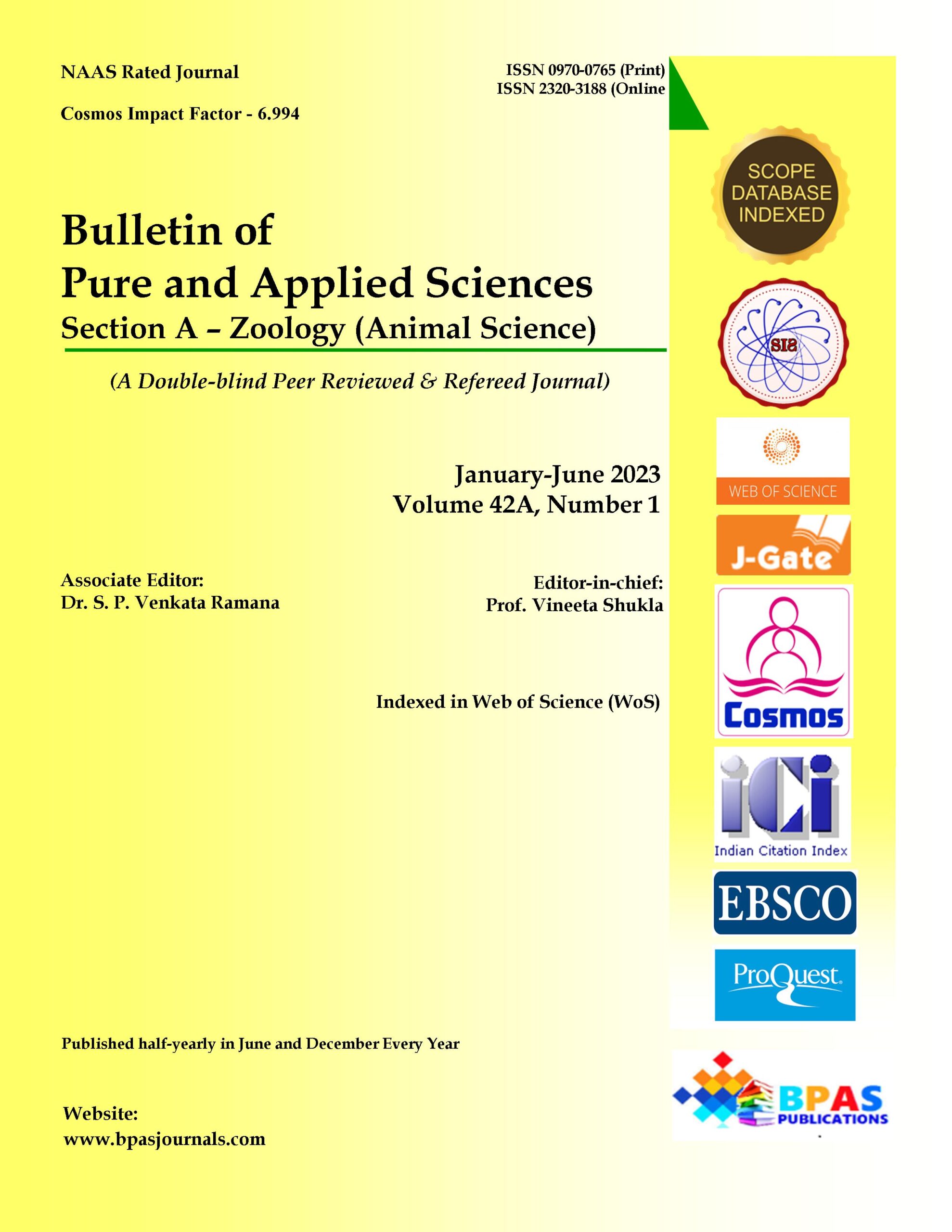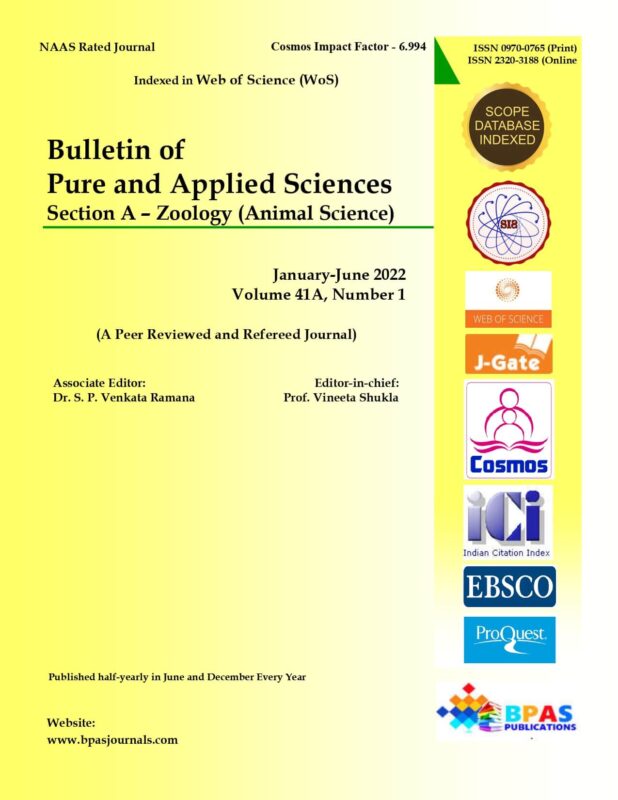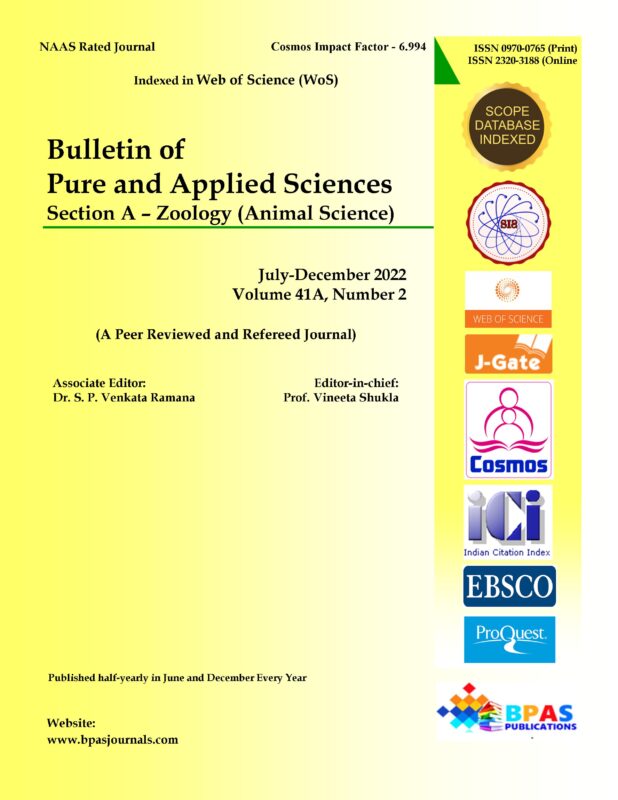Bioassay of Larvicidal Efficacy of Selected Plant Extracts Against Mosquito Larvae Anopheles Culicifacies and Aedes Aegypti L.
9.38$
Bioassay of Larvicidal Efficacy of Selected Plant Extracts Against Mosquito Larvae Anopheles Culicifacies and Aedes Aegypti L.
1 Uma Dutta* and 2Sonali Dey
Bulletin of Pure and Applied Sciences
Zoology (Animal Science), Vol.42A, No.1,
January-June 2023: P.170-189
DOI: 10.48165/bpas.2023.42A.1.16
Original Research Article
Description
Bioassay of Larvicidal Efficacy of Selected Plant Extracts Against Mosquito Larvae Anopheles Culicifacies and Aedes Aegypti L.
1 Uma Dutta* and 2Sonali Dey
| Author’s Affiliation:
1Associate Professor, Department of Zoology, Cotton University, Panbazar, Guwahati, Assam 781001, India 2PhD Research Scholar, Department of Zoology, Cotton University, Panbazar, Guwahati, Assam 781001, India
|
| *Corresponding author:
Dr. Uma Dutta, Associate Professor, Department of Zoology, Cotton University, Panbazar, Guwahati, Assam 781001, India E-mail: uma.dutta@cottonuniversity.ac.in, umadutta@yahoo.com
|
| Article Info:
Received on 12.03.2023 Revised on 19.05.2023 Approved on 22.04.2023 Accepted on 31.05.2023 Published on 16.06.2023
|



